I’m not someone who likes to chase sightings for my wildlife photography. I’m the photographer who arrives five minutes after the incredible animal has been and gone. You know the drill; you walk into the hide, and the first thing you hear is: “You should have been here five minutes ago, mate. A kingfisher was riding around on an otter’s back”. Okay, that could be a slight exaggeration, but I’m sure you can sympathise. I am the woman who went to where a flock of waxwings had been all week and had been spotted again that morning, only to find that they’d disappeared about an hour before I arrived, never to return.
So, after having my hopes dashed more times than I care to remember, just turning up at a location with no prior knowledge of recent sightings seemed to be the best plan.
Group therapy
That was until I joined the Clyde Cetacean Sightings Facebook group. I saw a post with a video of bottlenose dolphins playing in the Firth of Clyde appear in my feed, and I couldn’t resist joining. Now, I know you can see dolphins, porpoises (I had already spotted these from a distance) and whales in the Clyde, but I had no idea there was a hotspot for watching bottlenose dolphins on Greenock Esplanade. Once I discovered this, I spoke to my partner to see if he’d be interested in a wild dolphin chase. Although we both acknowledged we’d have to be incredibly lucky to be walking along the esplanade at the same time a pod of dolphins swam past, we decided to take a stroll there that afternoon.
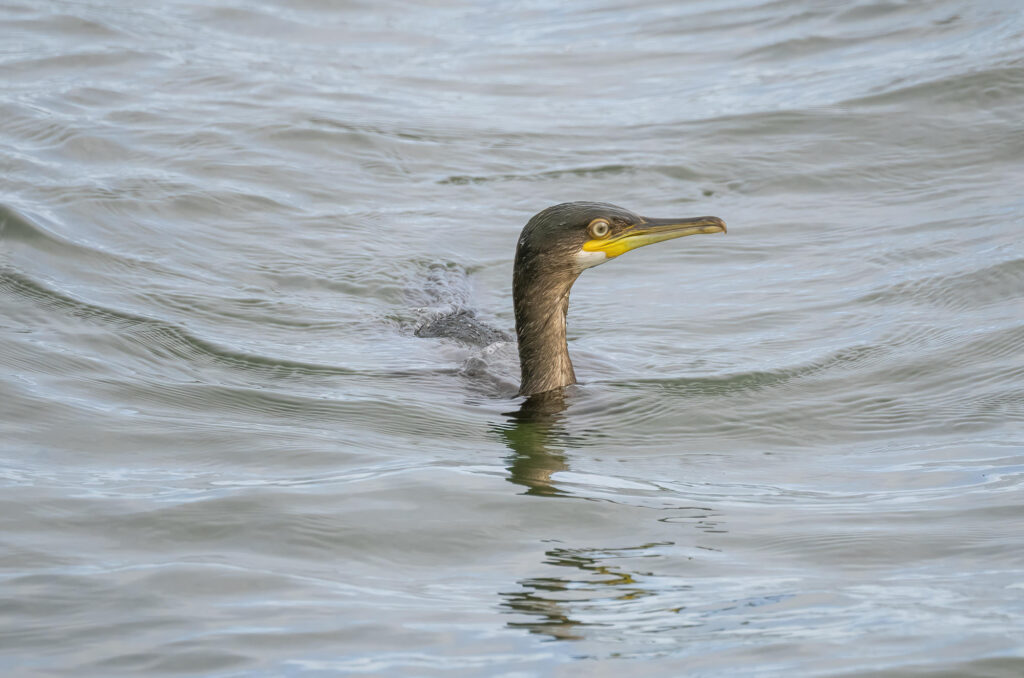
We parked up and walked the length of the esplanade, pausing for me to photograph a black guillemot in non-breeding plumage and a shag that got chased away by a great black-backed gull. I was pretty happy with those images for a short walk by the sea, so we headed along the front to the car.
Feeding frenzy
I think you can probably guess what happened next from the image that features at the top of this blog!
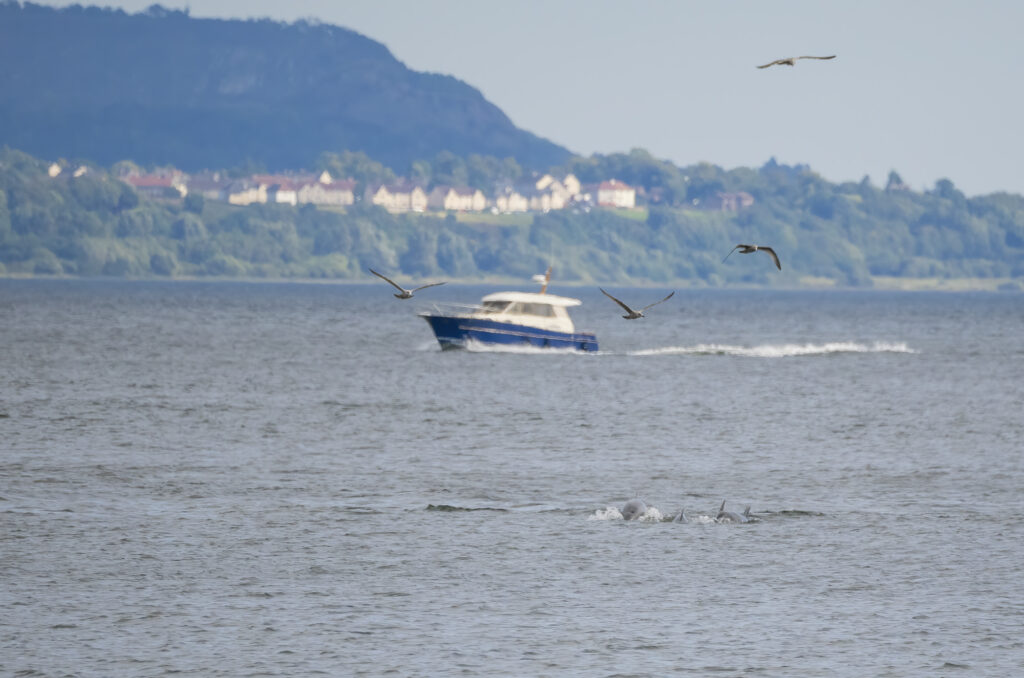
I hadn’t noticed the small crowd that had formed further along the path, but I saw the blow – the dolphins were heading towards us. We stepped onto one of the ramps that jutted out over the water from the main path and had the perfect view of the small pod of bottlenose dolphins approaching. I say they were heading towards us, but they were actually going in every direction – they were hunting and seemed to be working together to herd the fish to the surface.
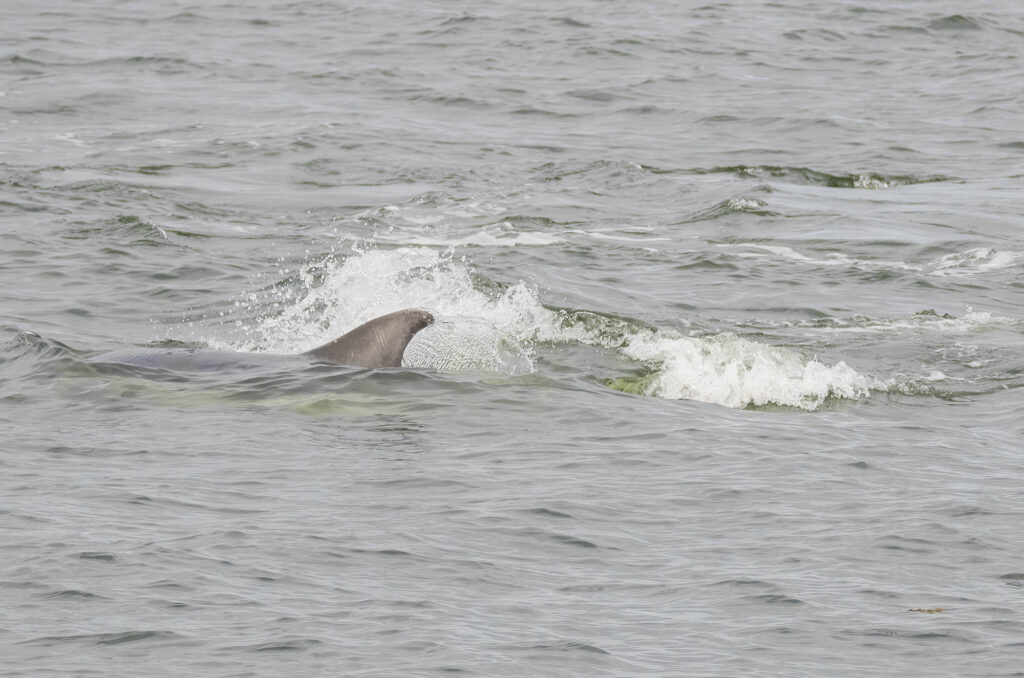
Video viability
I hadn’t photographed dolphins like this before. My previous experience was of distant shots of pods swimming in a straight line, shadowing the coast – predictable in their movements and travelling at a steady pace. The movements of the Clyde dolphins were fast and unpredictable (to me, anyway).
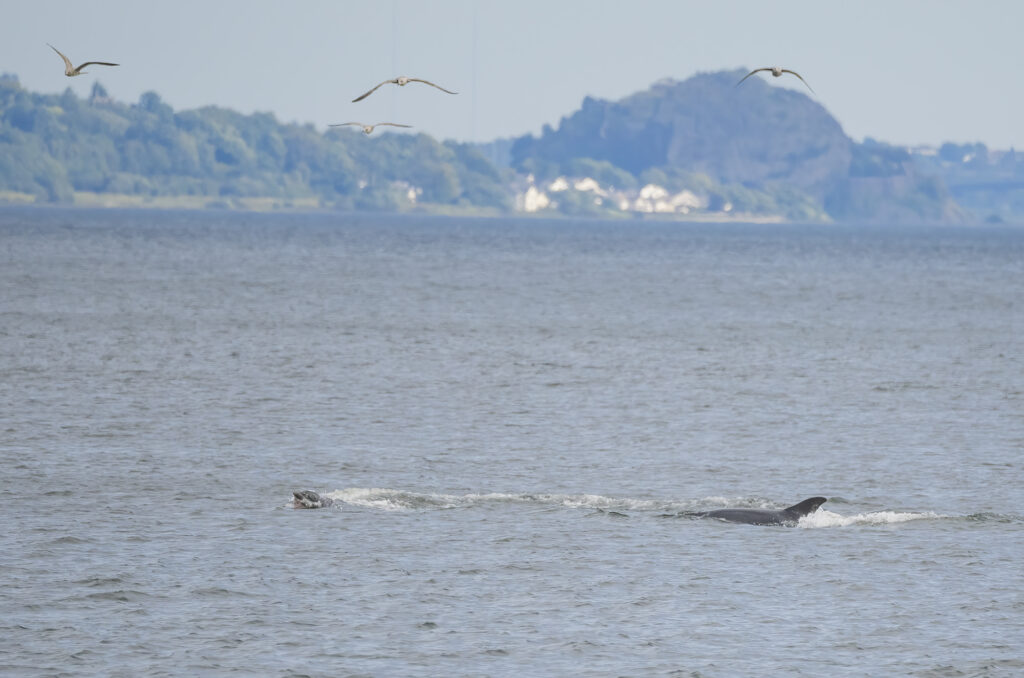
After capturing some images and with no time to check what I’d got, I switched to recording video. Getting footage would have been pretty impossible using my Nikon D500 with the long lens attached and without a tripod, but using the OM1 handheld for video is much easier. I used the rail on the ramp for stability and tried to predict the dolphins’ movements as best I could.
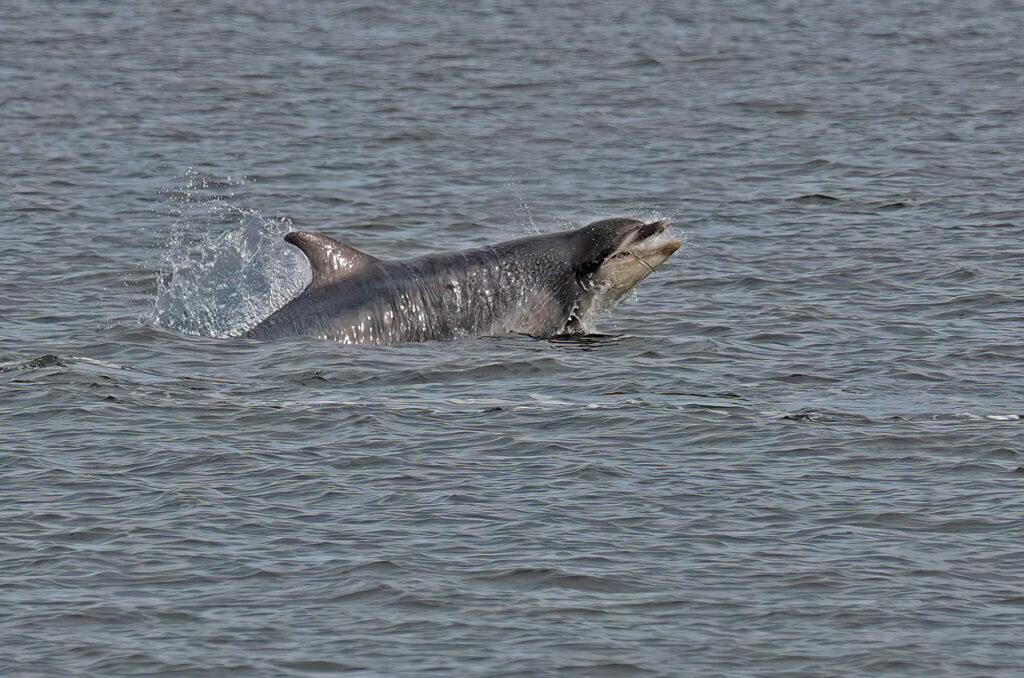
The video I captured (watch it below) is a bit of a mess, but recording a fish leaping out of the water with a bottlenose dolphin in pursuit felt like an achievement when I had next-to-no experience with these breathtaking mammals. I also took still images from the video, which meant I got detailed shots of the dolphin leaping out of the water.
Sighting success
After a few frantic minutes, the dolphins continued their journey, and we headed home.
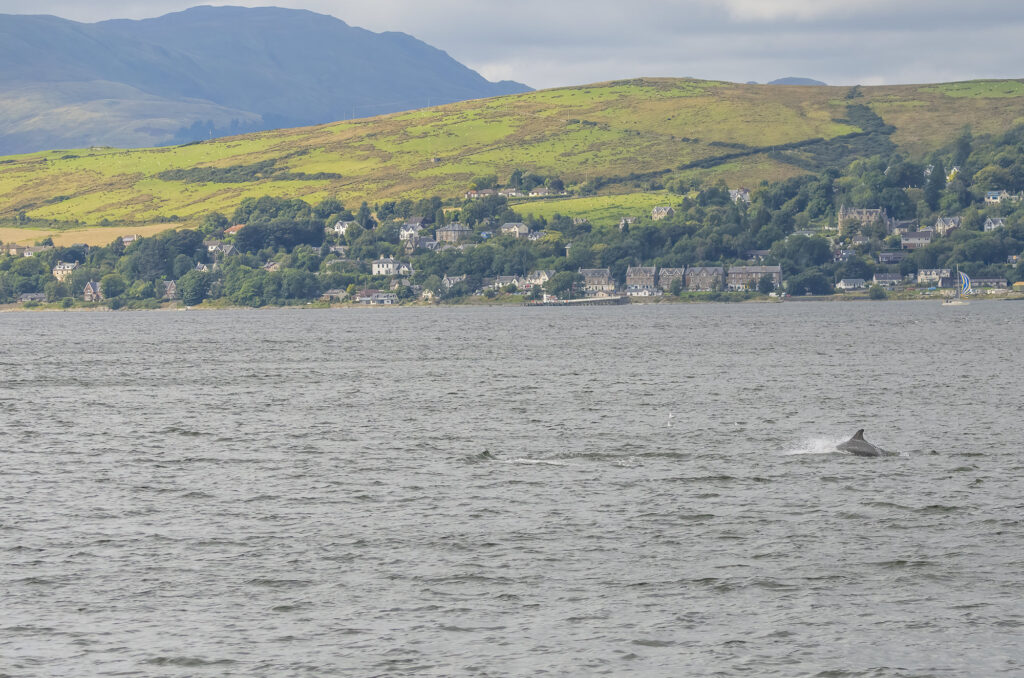
Not long afterwards, an osprey was recorded regularly at Frankfield Loch on the Clyde Birding X (formerly Twitter) feed. On a dull and rainy afternoon, we took another leap of faith and went to see if it was still there…and it was. Perhaps chasing sightings for wildlife photography – with a healthy lack of expectation – isn’t such a bad idea after all. What do you think?
Find out more about dolphins in the Clyde and how to report your sightings on the Clyde Whale and Dolphin Watch website.

